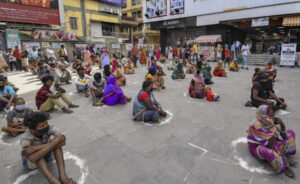Namaste, Dear Music Lover,
In difficult times like these, I think one useful pursuit for any creative person is to at least try to have a healthy diversion or two… why not embrace a little fun in your life? 😊 😊 😊
So… what could I mean by a little fun? I’ve been called a very fun person. Well, in the context of this post, I don’t mean a small doll or other plaything. I may be fun, but for heaven’s sake, I’m a real person, not a toy! Here’s a good pro tip: save your sadness (so it’ll be available for that certain tragically emotional song)! Family and friends we hope will support your process and embrace your fun times, not the sadness moments related to an occasional failed audition.
Here, I’m bringing up some simple vocal exercises that can help you to both expand your melodic palette and at the same time improve your vocal technique. So how can these even be possible yet, as suggested, fun at the same time? It all sounds like a big promise, I know. Implying that I may be trying to pass off some sorts of stressful exercises that build vocal chops—pretending that it’s actually fun? How will you know until you try them? Even roustabouts exercise (their own freedom).
Here’s something for which you can thank me now: a free voice lesson (or really, just thank Saher Galt, the teacher who created his videos that I’m sharing here): not all practice needs to be a grind. (That’s why I suggest varying your vocal exercises and warmups to keep them fresh!)
Yes, it can become routine/boring to practise scales and intervals, one after another. We do this mostly so that in those moments when it’s our turn to shine, our performance seems effortless (and not as though we beat it to death in a practice room hoping to achieve something like pro-level competence). In the first simple example (which has a flow very similar to how a good voice teacher works in a lesson… Galt presents a passage and works with the student viewer until she or he can repeat it without any issue—rewind is always an option for video learning) the progress will come in the usual way: through completing many repetitions. Athletes shorten that word to reps.
Among performing artists as well, doing skillful things repeatedly creates a phenomenon termed muscle memory. Basically, all it means is that one trains one’s muscles to do a task again and again (until the execution becomes virtually effortless). It also seems that modern conceptualizations of the human brain (including its substance and functions) suggest that in many ways it resembles a muscle (really, a massive interconnected cluster thereof)! Hence, memory analogies can be regarded as particularly valid when discussing our ‘cognitive engines’. The more we train them, the stronger they and hence we become!
Anyway, with only a minimal introduction, I want to share a YouTube video which presents some scalar materials that we often hear in Indian film music: the Phrygian Dominant, and Aeolian (Natural Minor) Mode and #4 (“sharp four”—commonly called “blues”) scales.
One basic scale often heard in “music for the masses” stems from The Blues from early 1900s U.S. urban or rural African American or so-called “race” (black) artists of the era as codified in urban and rural folklore and various phonograph records, and the usual way a blues scale is formed is with a sharp–4 (or “blue”) altered note. Hence its name: the Blues scale. There are many other interesting and exotic scales and altered scales to explore, if such things interest you. Often, one or another cultural identity pertaining to music can tend to colour its interpretation markedly, based upon which culture is viewed as predominant or empirically superior. Yet that can be rather avoidant of obvious realities.
I’m still exploring the many unique melodic uses of some of my favorites among them, as well as the incredible variety of scales and tunings (commonly called swaras in Sanskrit). As the pop-culture expression says, “it’s all good” (and used with requisite skill by masters like Pritam and Gulzar, “anything [good] goes.”).
Since many of us weren’t born in the U.S. and don’t have a common cultural perspective on the blues scale, let me point out that “the blues” as a musicological phenomenon did originate in the U.S. a little more than a century ago, and it features lyrics about hardship and suffering, whether it be in the form of the standard songwriter’s anodyne unrequited love or racist oppression. Often, the lyrics have encoded connotations. One of the first influential blues singers was a black woman: Bessie Smith. Her recorded opus touches upon such subjects (and whimsical others).
As you read the link in the preceding paragraph, while I have already explained the use of the pound (“#”) sign to indicate sharp—which in European music notation means ‘raised in pitch by a half-step’ (e.g., a sharp four means the fourth scale degree (note/pitch) is altered to be a half-step higher—which imparts a distinctly unusual flavor to the note and scale), and when we see the flat “♭” symbol (resembling a pointed-bottom b) used to show an altered note, this means the note is ‘flatted or lowered by a half-step.’
Given that in western harmony (which has deeply impacted much film music writing and is part of the stock-in-trade of virtually all pop and European origin classical [typically meaning scholarly] music) they’re so commonplace, we see sharps # and flats♭ in various contexts. We see them in key signatures, which alert the person reading a written part in western notation as to the tonal center of a part or composition (e.g., a song). Also…
These pitch alterations can appear with individual notes, serving to also alter the quality of a melody or chord. Altered notes can be used in a variety of ways, that especially in a Jazz context, is perhaps largely out of the scope of even my entire blog-site. If you want to know more on such nuances, there are excellent learning resources available online—as taught by the recently-departed American Jazz composer Chick Corea. Jazz is cool.
Again I’ve broached a huge topic to which even I cannot do justice on this, my blog-site, but I linked some background information from the Brittanica Encyclopedia. Note that generally, unintended pitch alterations are regarded as mistakes, and by this we don’t mean happy accidents. These issues tend to be more obvious for vocals, as listeners often become rather wrapped up in a singer’s technique (likely so more than in hearing any instrumental contribution to a musical performance).
Rather than launch into an exhaustive, dry discussion about western music/Jazz notation and theory, I’ll stay on track about the “fun” video I’ve promised to share, and let you see for yourself just how fun and easy this stuff is. For myself, I’ve found excursions into certain folkloric traditions both enjoyable and instructive. I also enjoy sampling the expertise and wisdom of a diverse variety of voice instructors. I hope that you do as well.
Every singer has their favorites! I encourage you to reach beyond your comfort zone to learn about various traditions and techniques to perhaps discover some aspects that you may wish to incorporate into your vocal styles. If however, you’re passionately interested in things like altered chords and modal substitutions, I hope you’ll explore the teachings of the true masters like Armando “Chick” Corea. Much of his instrumental music just soars!
Still, for modern voice lessons, the most obvious difference we might observe between a teaching studio in Kolkata or Mumbai vs. London or New York is that in N.Y. [as in the video] it’s probably a piano used to remind a singer what pitches to sing, but in Kolkata or Mumbai, it’s more likely to be a harmonium. Same equal-tempered tuning system (and that could involve another long discussion, into which we could delve in future posts here), in other words the same exact pitches (and remember: singing on pitch is the #1 skill for aspiring singers)! Hitting the exact notes is simply universal!
So in a typical voice lesson from a pro like my Baba, what you’re most likely to experience is a melody or scale played on the keyboard instrument, and as the student, your task is to repeat (sing) those notes back to the teacher, who will listen and correct any issues.
Sounds easy and fun? Trust me: it IS! One benefit for singers: we only need (/are able) to perform one pitch at a time! So how do some singers sing harmony with themselves? They use the magic of audio re-recording with overdubbing (aka “sound-on-sound” or “sound-with-sound” from the magnetic tape days—and even those techie terms have become less correct in the context of modern digital tools like ADR suites, pitch correction software, and non-destructive editing)!
But I digress… so without further ado, here’s the first Saher Galt video I’ve promised to share. (Just so you know, pitch correction software is for non-singers. I don’t use it.)
Here’s another one of Saher’s useful YouTube vocal mastery videos, this time a fairly massive workout that really exercises one’s pipes. Finally from Mr Galt, this brief turn on exotica (and this one may strike a familiar sound for Indian ears). Please note that this represents the tip of a massive stylistic/technical iceberg, for the full variety of musical scales when we include “quarter-tone” (/“Arabic”) and countless microtonal scales is surely unlimited.
Okay, so if those two scales (Phrygian Dominant, and Aeolian #4) scales don’t sound very “exotic” to you, you’re probably from an eastern culture. I’ve heard such “altered scales” for my entire life! (Plus many others; not only the common/pop blues scale. For an exhaustive treatment of such minute topics as the abundance of tunings and scales available to the initiated, e.g., in Sufi singing, I’d suggest private tutelage with one or more genuine masters who specialize in it.)
Are you “with me” so far, Dear Music Lover? Is all of this theory-related “fun” stuff a bit “too exotic” for you? I hope not!!
Here’s the best part: you are 100% FREE to make up your own scales. The same goes for adding your own special embellishments. Note: it may be problematic to try that when singing along with fixed-pitch instruments (or you might expect painful results). Also, before you go to that extent, please acknowledge the countless great singers who predated us and even in distant antiquity explored these musical realms in great detail. I feel compelled to add that while a singer can only intone one pitch at a time, by use of distinctive articulations and/or embellishments, a singer can imitate a variety of polyphonic instruments (here, I have in mind the Baroque turn or mordant, perhaps first heard played on harpsichords or wind instruments).
By the way, simply because we can make up scales ourselves doesn’t mean that anyone else will approve or adopt them, too. Regardless, let’s not digress too much. Anyhow, nowhere on Earth have the myriad elements of vocal performance been so carefully examined and dissected in such minute detail as they have in South Asia (as far as I know, although there are certainly some other viable pretenders to that crown, for sure)!
I don’t know if Saher Galt offers comprehensive private tutoring or video syllabi into so-called “exotic” and “altered” scales. If he does, that’s some massive collection of lessons, for sure! When we refer to such aspects of melody in the Hindustani paradigm, we use an entirely different vocabulary. I’m trying to bridge the musical gap between eastern and western rites. I type this blog in carefully spell-checked English (thanks, web team!) and offer you, the blog-site visitor, a tool to read every word in the language of your choice (thanks, WordPress and Google Translate!). Note: I’m curious which non-English language(s) you use most here—I like to think that our fans are both geographically and linguistically diverse!
I’m not always aiming for the most simplistic explanations of the topics I tackle, rather I hope to spur your interest and share a few useful tools and other resources and reliable info. sources, with the goal of supporting and encouraging you to sing your very best toward whatever involvement in music works best for you. (Your feedback helps us to do better. Just as I’ve expected my own students to take notes, I’m seldom teaching these days—but I’m always eager to learn new things and to become acquainted with more great music and its creators.)
While my dearest supportive family helped me to realize my dreams of singing for films, I still had to develop my vocal skills and go through a long growth process (partly on live TV broadcast to millions). So I’m not pretending that easy shortcuts exist. Still, when one narrows one’s workout regimen to the simplest set of effective exercises and puts in the hours, whatever level of success follows is neither accident nor luck. Other regimens may also be equally or more valid. However life itself (like a Bollywood film career) is all too brief in duration; we must choose our most preferred paths, with views toward reaching at least some of our goals and dreams.
Please note: I’m not presenting my posts here along with examples and links as if they contain the best or only ways to master playback singing. I’m also not endorsing any one school of voice or guru. These types of workouts resemble some of what I’ve learned over multiple years studying and practicing music (with, in my case, strong emphasis on practise-makes-perfect, as the expression goes). Your mileage may vary. Please stay motivated by whatever/whomever inspires you!
I only hope this helps your practise, too. Maybe if this post isn’t immediately to your liking, I will some day offer (or maybe I’ve already posted) others that could help you—for, no matter where a singer begins, the path to excellence is paved in real work; while it may look easy, it’s sort of hard. Not so hard that it’s discouraging or a hassle, but neither is it a trade that anyone could master in a few weeks, nor even in a few years. There’s also no reason to hastily give up, simply because one hasn’t found a lot of success, either.
I’ve asked my web team to close this post with a more or less universal blessing and some apt pandemic safety advice—and here is what they chose:
☘️ ☘️ ☘️ ☘️ ☘️ ☘️ ☘️ ☘️
☘️ ☘️ ☘️ ☘️ ☘️ ☘️ ☘️ ☘️
While we continue to work through the life-threatening pandemic using all of the best practices that our medical and public health experts advise us can impact our outcomes, I hope that you’ll cheerfully don a mask at all of the appropriate times in all of the appropriate places.
Please, Dear Music Lover: rock that mask,
…or because I like a wide-belt look, maybe more like
Now please wash those hands, and practise social distancing.
When your opportunity to be vaccinated against that dreadful outbreak comes, I hope you’ll do the right things and protect self and others!!
May your lengthy practises feel like warmups, and may your warmups be brief, especially when you know that your “pipes” are ready to sing! Stay safe and confident in knowing that no matter what, people love you, too. Your support system will sustain you through the starting-out lean times. Just recall how good a little kindness feels at any given (stressful or ordinary!) moment, and despite the fact that people can be forced into quarantine against their will, we each have our own unique gifts and perspectives.The cost to oneself for offering a smile and a few kind words is minimal! Sharing is caring!
Namaste,
♫ AM ♫





